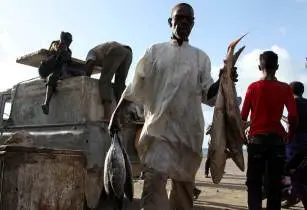The UN’s Food and Agriculture Organization (FAO) and European Union (EU) have given a boost to sustainable fishing in Somalia
The two groups have together completed the deployment of 25 ‘fish magnets’ along the Somalia’s 3,300-km coastline. The fish-aggregating devices (FADs) consist of a floating buoy and ‘habitat mat’ a few metres across. Plant life grows quickly under the mat and attracts large numbers of fish, creating new high-density fishing grounds where none existed before.
The 25 ‘fish magnets’ will attract many different species of fish, including tuna, that normally small-scale fishers cannot easily catch, making fishing safer and more efficient, while also encouraging fishers to switch their fishing efforts away from habitats such as coral reefs and sea grasses that are vulnerable to over-fishing.
“The FADs initiative is at the heart of the work by FAO and our partners to boost coastal livelihoods, strengthen resilience and tackle the underlying causes of piracy - illegal fishing, degradation of local fisheries, high levels of youth unemployment and food insecurity,” said Richard Trenchard, FAO representative in Somalia.
FAO worked with 20 communities as well as federal and regional ministries in Somalia to identify the deployment locations and ensure that the FADs would be accepted and well used.
According to Trenchard, the devices should help kick-start further longer-term development support to these communities and drive investment to strengthen market linkages.
“As well as expanding the FADs programme to other areas, we will be working with the ministries and the fishing communities to attract further investment for ice machines, cold storage and processing facilities, improved landing sites and, of course, better roads to bring fresh fish to markets as quickly as possible,” Trenchard said.
The deployment of the ‘fish magnets’ has been funded by the governments of Japan and Switzerland.





